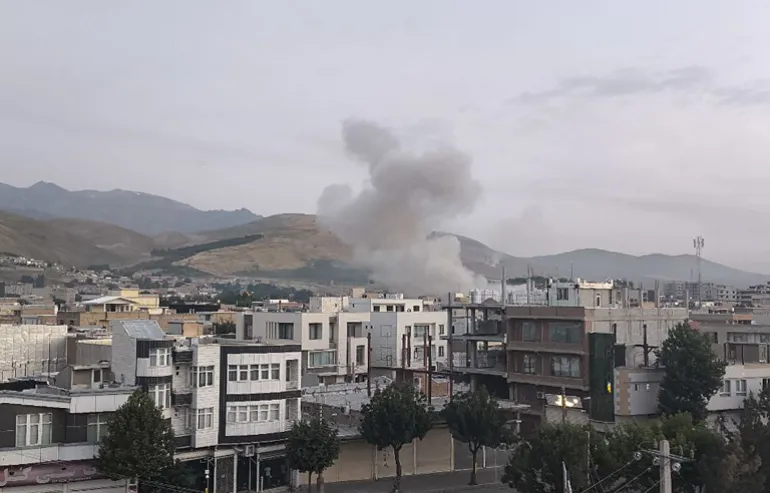- Courses
- GS Full Course 1 Year
- GS Full Course 2 Year
- GS Full Course 3 Year
- GS Full Course Till Selection
- Answer Alpha: Mains 2025 Mentorship
- MEP (Mains Enrichment Programme) Data, Facts
- Essay Target – 150+ Marks
- Online Program
- GS Recorded Course
- Polity
- Geography
- Economy
- Ancient, Medieval and Art & Culture AMAC
- Modern India, Post Independence & World History
- Environment
- Governance
- Science & Technology
- International Relations and Internal Security
- Disaster Management
- Ethics
- Current Affairs
- Indian Society and Social Issue
- NCERT- Science and Technology
- NCERT - Geography
- NCERT - Ancient History
- NCERT- World History
- CSAT
- 5 LAYERED ARJUNA Mentorship
- Public Administration Optional
- ABOUT US
- OUR TOPPERS
- TEST SERIES
- FREE STUDY MATERIAL
- VIDEOS
- CONTACT US
Asur Tribes in Netarhat to Get Forest Land Rights
Asur Tribes in Netarhat to Get Forest Land Rights
The Asur community, a Particularly Vulnerable Tribal Group (PVTG), residing in the Netarhat plateau region of Gumla, will soon receive benefits under the Forest Rights Act (FRA).
Background:
The Asur community has not yet been officially given ownership papers for individual forest rights or community forest rights. The community, believed to be one of the oldest iron-melting tribes, has been living in the Netarhat plateau region for centuries.
Development:
The Gumla district administration has taken steps to assist the genuine claimants to forest rights and authenticate the legitimacy of their claims.
- A district-level committee (DLC) under the FRA, comprising the deputy commissioner (DC) and the divisional forest officer (DFO), has been formed to facilitate the process.
- The DC and DFO visited the Asur settlement — Lupungpat — to understand their situation and problems.
Current Status:
- 18 members of the Asur tribe have applied for forest (land) deeds.
- The DC and DFO discussed their forest rights and inquired about their issues related to drinking water, electricity, and various welfare measures meant for them.
Forest Rights:
The Asur tribe's rights will be recognized after all the paperwork is completed.
- The DC said that their visit was to understand the gram sabha meeting for deciding 18 individual forest rights claims.
Other Initiatives:
- The administration also intends to cover the Asur tribe under various government schemes to bring a change in their lifestyle.
- A new multipurpose centre is going to come up in Lupungpat soon.
About Asur Community:
The Asurs are a small Austro-Asiatic ethnic group living primarily in the Indian state of Jharkhand.
- They are included in the list of Particularly Vulnerable Tribal Groups (PVTGs).
- As per the 2011 census, the tribe has a population of around 23,000.
- They speak the Asur language, which belongs to the Munda family of Austro-Asiatic languages.
Occupations:
- Asurs are traditionally iron-smelters.
- They were once hunter-gatherers, having also involved in shifting agriculture.
- Majority of them shifted into agriculture, with 91.19 percent enlisted as cultivators in the 2011 census.
Society:
- The Asur society is divided into 12 clans.
- Family is the second-most prominent institution after the clan.
- They have their own community council (jati panch) where disputes are settled.
Religion:
- The Asur religion is a mixture of animism, animatism, naturalism, and ancestral worships.
Particularly Vulnerable Tribal Groups (PVTGs):
- PVTGs are a more vulnerable group among tribal groups in India.
- These groups have primitive traits, geographical isolation, low literacy, zero to negative population growth rate, and backwardness.
- Currently, there are 2.8 million PVTGs belonging to 75 tribes across 22,544 villages in 220 districts across 18 states and Union Territories in India.
Challenges:
- The Asur tribe faces challenges in terms of accessing education, healthcare, and other basic amenities.
- They are also vulnerable to exploitation by outsiders.
Conclusion:
The recognition of forest rights for the Asur tribe is a significant step towards empowering them and improving their livelihoods. The administration's efforts to cover them under various government schemes will also help to bring a change in their lifestyle.



